Overview
The Say Step supports three interaction modes:
Static Text: This is the default mode. When more than one child follows the previous step, the title of the Say Step appears as a button. Once selected, the message box is displayed to the customer.
Knowledge Base Item: When selecting the KB item, the flow presents its full content to the customer.
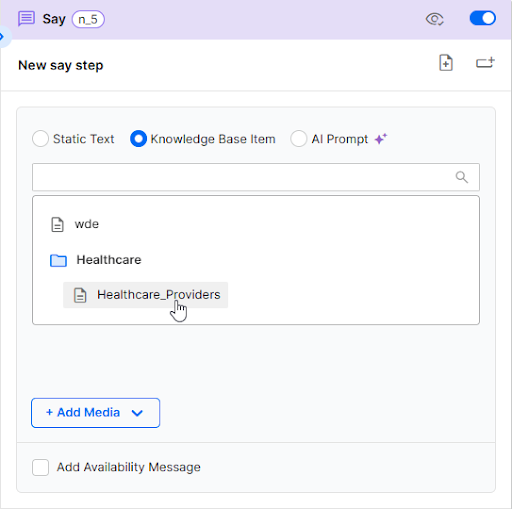
AI Prompt: Guide the AI Agent through direct instructions, enabling natural, human-like interactions that significantly improve customer experience.
Note: To utilize AI capabilities, make sure AI is enabled at the module level.
Prompting the AI
In our flow, the AI step is followed by a Transfer to agent step.
Note that the step is marked with the AI icon.

General Guidelines
-
The AI Agent Persona is set in the Agent Persona section. Click here to learn more about this aspect of the AI Agent.
Note: The AI Agent toggle does not disable external data usage in the Say Step. The AI Prompt inside a Say Step may continue to use internet-based information even when the AI Agent is turned off.
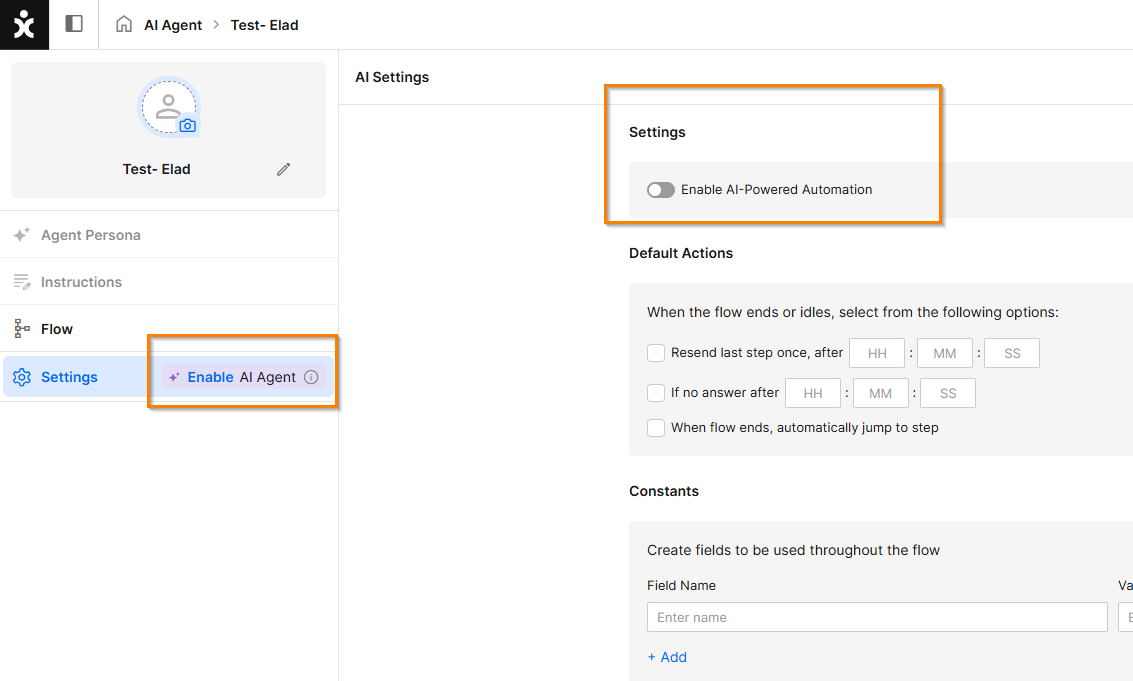
-
In the Say Step, you can tailor how the AI Agent responds to the customer independently of the global persona defined in the settings.
-
You can instruct the AI to reference the customer’s actual message by guiding it in the prompt and appending {{object.message}} at the end of the instruction. This allows the Say Step to generate a context-aware response based specifically on what the customer wrote, rather than relying solely on general configuration or persona defaults.
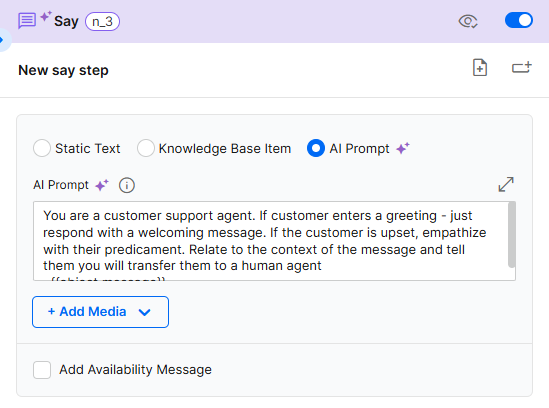
-
You can guide the AI Agent on how to respond to different types of customer input. The response itself will not change the path of the flow — the same next step will follow once the Say Step is completed.
Example prompt:
“If the customer enters a greeting, respond with a warm welcome. If the customer sounds upset, acknowledge their frustration and let them know you will transfer them to a human agent.”
Note: The transfer to a human agent (the next step in the flow) happens automatically after the customer’s first message — the AI’s response is only the message shown before moving forward.
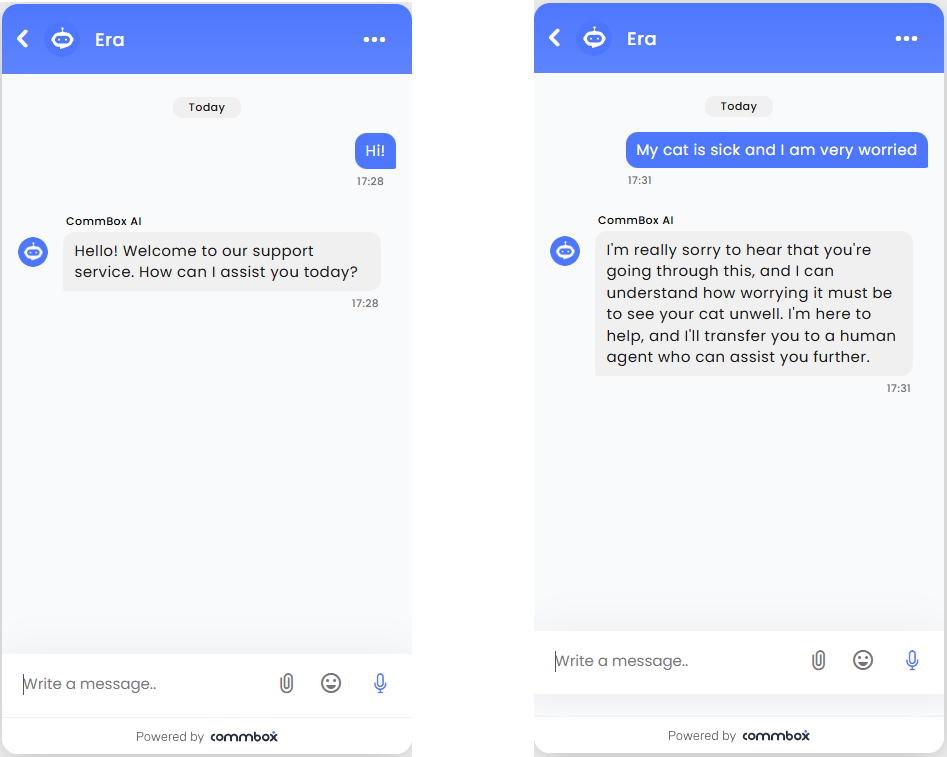
Adding Variables
The AI can relate to the information found in the customer information record when identifying a WhatsApp customer. You can then ask the AI agent to relate to the customer by their first name (for example) by adding {{user.first_name}} at the end of the prompt.
Best practice: Use the auto-complete of available variables to avoid mistakes.
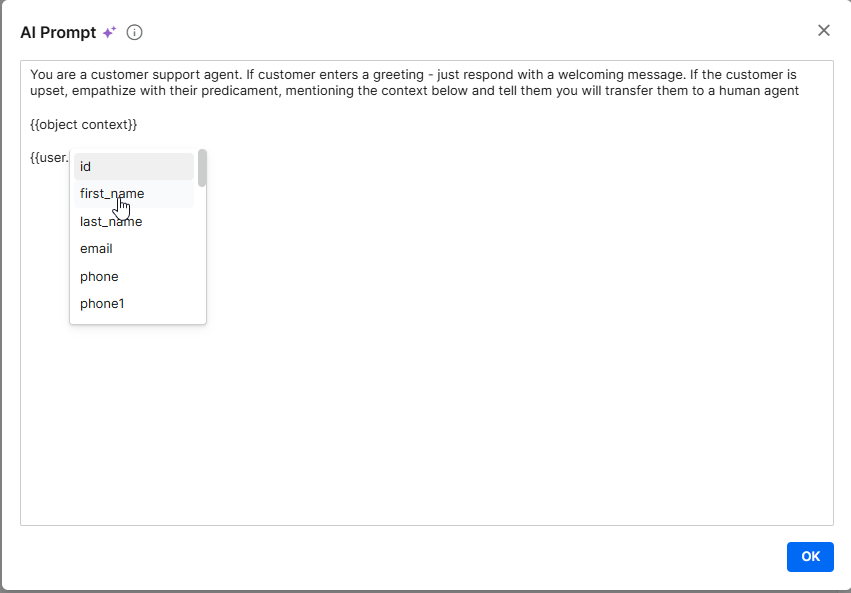
Knowledge Base (KB) Mentions
You can ask the AI agent to refer to a specific Predefined Reply KB item when generating the response to the customer. Content must be in Plain Text.
-
In the prompting box, enter two open curly brackets ({{), and select knowledge.
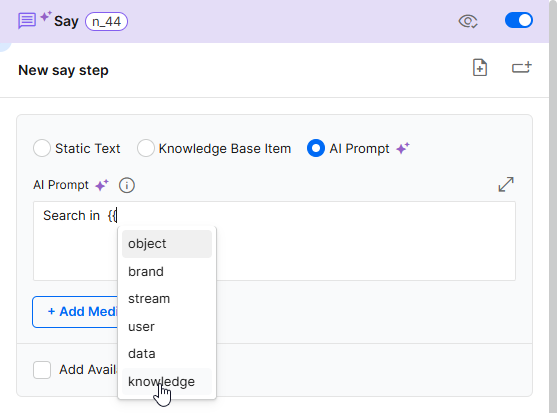
-
Select the KB item you want the AI Agent to refer to (start typing the file’s name to make the KB appear).
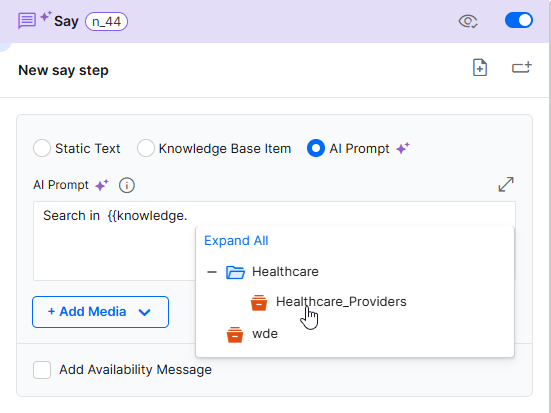
-
Instruct the AI Agent to display specific information from the KB item.
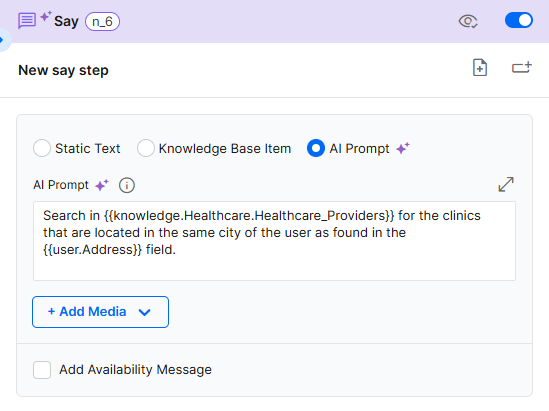
Note: Depending on the structure of your KB item, you can direct the AI Agent to refer to only relevant sections within the KB item, based on heading, etc.
Best Practice: Add Intents to the flow to help the AI Agent move faster from the Say Step to the relevant selection that follows it.
- Save changes.